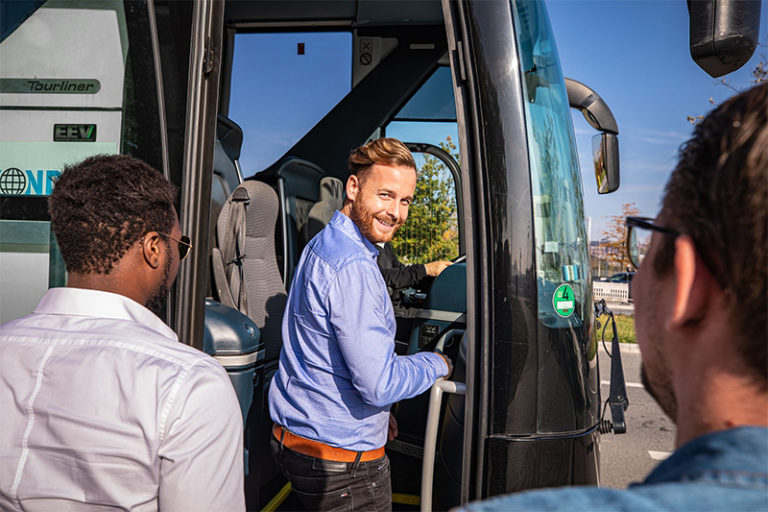20 Free Ideas For Choosing Event Transportation Sites
Top 10 Tips For Choosing The Right Vehicle And Capacity For Employee Shuttle TransportationHere are 10 fantastic tips on how to choose the right vehicle size and capacity with regards to shuttle service for employees.
1. Take into consideration the transportation needs of employees.
Conduct a thorough assessment of your employees to determine the percentage who regularly utilize shuttle services. Take into account factors like the amount of staff you have as well as the shifts that are scheduled for work and the times of peak usage. This information will help you choose the correct capacity of the vehicle, and make sure that the shuttles have the capacity to accommodate a range of passengers.
2. Choose the Correct Type of Vehicle
Select the vehicle most suitable for your shuttle service based on how many employees you have and what their needs are. There are a variety of minibuses to larger buses. Minibuses and vans are great for small groups because they are easy to maneuver within tight spaces. However, larger buses are suitable for greater capacity needs. The layout of the vehicle is important. It should provide an area for comfortable seating for employees who carry bags or equipment.
3. Evaluate Fuel Efficiency
Costs for fuel have a huge impact on the budget for shuttle services. To cut down on operating costs make sure you choose vehicles that are efficient in fuel use. Look into electric and hybrid vehicles because they provide long-term savings and also meet the sustainability targets. The analysis of fuel efficiency can help you to make an informed decision, balancing capacity and cost effectiveness.
4. Consider Accessibility features
Make sure that the vehicles you use meet accessibility standards in order to accommodate disabled employees. It is a must to include features such as elevators for wheelchairs, floors that are lower to make it easier for people with mobility issues to access the vehicle, and special seating designated for them. Accessible transportation not only complies with the law as well as promotes an inclusive workplace.
5. Plan to grow and be flexible
As a company grows, the size of its workforce may shift. Be aware of the possibility of future growth when selecting a vehicle. Investing into vehicles with adjustable seating arrangements and the possibility of expanding capacity can allow you to adjust to changes in employee numbers without having to replace your vehicle often.
6. Check out safety ratings and features
Safety is the most important element in the transportation of employees. When you're choosing an automobile, be sure to study its safety features and ratings. Look for vehicles that are equipped with the latest technology, such as antilock brake, stability control, or collision avoidance systems. Check that the vehicle complies with the federal and local standards to ensure safety for your employees.
7. Review the Maintenance and Reliability
Choose vehicles that are renowned for their low maintenance cost and reliability. If your vehicle is always in need of repair can result in shuttle interruptions and employee unhappiness. To prolong the life of your vehicle, you should look into reliability and maintenance schedules for every model and make.
8. GPS and Fleet Management Software
The shuttle service you provide can improve efficiency by implementing GPS tracking and fleet software. These software tools permit real-time tracking of locations of vehicles as well as optimizing routes in accordance with the weather conditions and schedules of employees. In addition, software for managing fleets can help monitor vehicle performance as well as fuel consumption and maintenance requirements, making sure that vehicles are being used effectively.
9. Implement employee feedback mechanisms
Encourage employees to provide feedback regarding the comfort of their vehicles and capacity by completing questionnaires or suggestions boxes. The feedback they provide can help identify overcrowding issues as well as accessibility or seating issues. This information can be used to make the necessary changes to the vehicle or service to improve your transportation experience.
10. Budget for Total Cost of Ownership
The total cost of ownership also known as TCO, includes the purchase price along with maintenance expenses, insurance, and depreciation. TCO analyses help to make informed decisions which balance the initial costs of investment with longer-term operational expenses. You can make informed decisions by weighing all the costs that are involved. This will help you pick a vehicle that will meet your budgetary needs while also providing capacity and reliability.
With these suggestions businesses can choose the right vehicles and plan the capacity of employee shuttles to ensure a secure, comfortable, and efficient service that will meet the demands of their workforce. Check out the recommended visit website for employee shuttle for website recommendations including car service pick up, book a shuttle, shuttle airport bus, bus shuttle service, san airport shuttle, shuttle atl, airport pick up service, shuttle airport bus, airport rides, shuttle to and from airport and more.

Top Tips For Route Planning And The Effectiveness Of A Business Transportation Service
Here are 10 suggestions for the planning of routes and efficiency a corporate event transport service.
1. Find the location of attendees
Begin by gathering data on where attendees will be coming from. This can be done through registration forms or RSVPs with addresses or general locations. It is important to know the location of the attendees to plan routes that are efficient and reduce travel time.
2. Use Route Optimization Software
Make sure you invest in software for route optimization which analyzes the patterns of traffic as well as road conditions and other variables to find the most efficient routes. These tools will help you identify the fastest routes, avoid congested zones and recommend alternate routes, should you need to. Utilizing technology to design your routes, you will be able to improve overall efficiency.
3. Plan to prepare Peak Traffic Times
Take into consideration peak traffic times when scheduling transportation. Examine traffic statistics from the past to figure out the time of day when there is the greatest congestion around the venue. Adjust shuttle schedules to avoid delays and ensure that participants arrive at the event on time.
4. Establish Multiple Pickup Points
Set up multiple pick-up points according to the location of attendees. This can improve convenience and reduce travel times. This can include hotels or public transport hubs and other popular places for gathering. It is possible to simplify the transportation process by offering multiple pick-up points. It will also decrease the distance to the event.
5. Make a detailed schedule of your transportation
Create a comprehensive travel plan which includes estimated travel times as well as departure and arrival times. Distribute the schedule in advance to all attendees so that they are aware of when their busses will arrive. A well-organized schedule will keep your transportation service running without a hitch, and reduce confusion.
6. Incorporate Buffer Times
Integrate buffer times into your schedule of transportation to accommodate unexpected delays, such as weather or traffic congestion. You can reduce the chances of people missing crucial parts of an event because of transportation problems by allowing additional time between pick-ups and drop-offs.
7. Check for updates to traffic in real-time.
Use real-time traffic tools in the days leading up to the event to allow for dynamic adjustments. If a specific route begins to get crowded and you are able to reroute shuttles can aid in maintaining the efficiency of the shuttles and ensure that guests get to their destination without major delays.
8. Choose a Transportation Coordinator
Designate a shuttle coordinator for the event who will oversee the shuttle service. The coordinator is able to oversee the logistics, interact directly with drivers, and address any problems that may arise. A designated individual can ensure the smooth and efficient running of transportation.
9. Communication with Attendees
Be sure to inform attendees about their transportation options like shuttle times, pickup spots and other modifications. You can communicate better by using mobile applications as well as printed materials and notifications via SMS.
10. After-Event Feedback
After the event, ask attendees for feedback about their experience with transportation. Ask attendees about the effectiveness of the routes, timeliness and satisfaction. Reviewing this feedback can help identify strengths and weaknesses in the transportation plan, allowing to make improvements in the future events.
These suggestions can aid you in planning your routes effectively and boost the efficiency for transportation services for corporate events. A well-planned and planned route not only assists attendees in arriving on time however, it can also make an event enjoyable for the host company. The effectiveness of corporate meetings is greatly affected by the effectiveness of transportation. Therefore the need for careful planning. Check out the recommended discover more for event transportation service for site examples including international logistics, transport mgmt, pace transportation service, pace transportation, transport services near me, company transport, pace transportation service, transportation management solutions, transportation management solutions, transportation industry and more.
